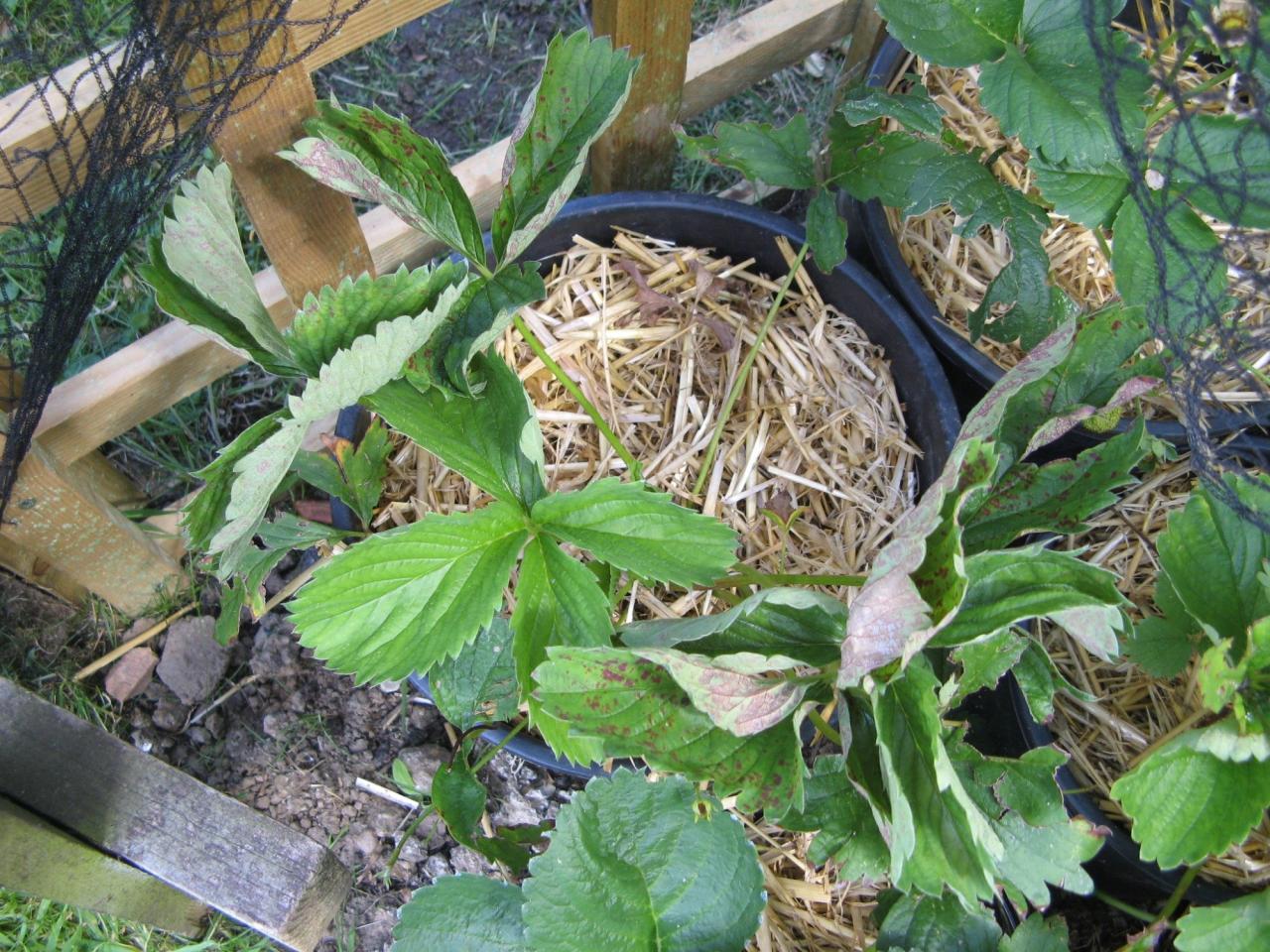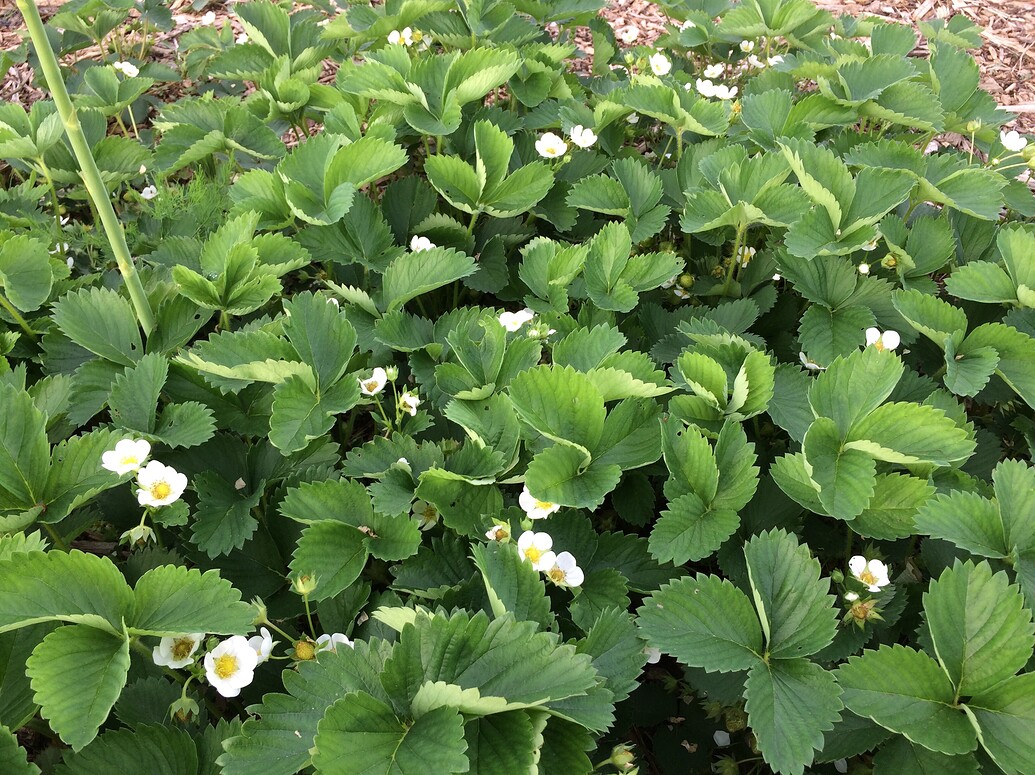Strawberry Leaves Curling Down – Strawberries are one of the most beloved fruits around the world, not just for their sweetness but also for their versatility in various culinary applications. However, if you notice that your strawberry plants exhibit unusual signs, such as curling leaves, it can be concerning. Understanding why strawberry leaves curl down is crucial for any gardener or strawberry enthusiast. In this extensive guide, we will explore the various causes of this phenomenon, how to identify the symptoms, and effective solutions to ensure the health of your strawberry plants.
Understanding Strawberry Plants
Strawberries (Fragaria × ananassa) are perennial plants that produce sweet, red fruits that are highly sought after. They thrive in well-draining soil and require adequate sunlight for optimal growth. Yet, like any plant, strawberries are susceptible to various issues that can affect their health and yield.
General Overview of Strawberry Cultivation, Strawberry Leaves Curling Down
To grow healthy strawberries, it is important to understand their requirements:
| Factor | Requirement |
|---|---|
| Sunlight | 6-8 hours daily |
| Soil Type | Well-draining, sandy loam |
| pH Level | 6.0 – 6.8 |
| Watering | Regularly, without waterlogging |
| Nutrients | Balanced fertilizer with nitrogen, phosphorus, and potassium |
Proper care and monitoring are vital for preventing issues such as leaf curling.
What Does Curling Down of Strawberry Leaves Indicate?
Curling leaves can indicate a variety of issues ranging from environmental stress to pest infestations. When leaves curl downward, it can hinder the plant’s ability to photosynthesize efficiently, leading to reduced fruit production. Let’s examine the main causes behind this symptom.
1. Environmental Stress
Strawberries can be sensitive to changes in their environment. Factors such as temperature, humidity, and water availability play crucial roles in the health of strawberry plants.
Temperature Fluctuations
Extreme temperature fluctuations can lead to leaf curling. Strawberry plants typically thrive in temperatures ranging from 60°F to 80°F (15°C to 27°C). When temperatures rise above 85°F (29°C) or fall below 50°F (10°C), the plants can experience stress, leading to curling leaves.
Watering Issues
Both overwatering and underwatering can contribute to leaf curl. While strawberries require consistent moisture, excessive watering can suffocate roots and lead to root rot, which in turn causes leaves to curl downward.
> Note: Always check soil moisture levels before watering. A good practice is to stick your finger about an inch into the soil. If it feels dry, it’s time to water.
2. Nutritional Deficiencies
Deficiencies in essential nutrients can manifest as leaf curling. Key nutrients for strawberry health include:
| Nutrient | Symptoms of Deficiency |
|---|---|
| Nitrogen | Pale leaves, stunted growth |
| Potassium | Brown leaf edges, curling |
| Magnesium | Interveinal chlorosis (yellowing between veins) |
Regular soil testing can help identify any deficiencies before they lead to serious issues.
3. Pest Infestations
Various pests can afflict strawberry plants, leading to symptoms such as leaf curl. Common culprits include:
- Spider Mites: These tiny pests suck sap from the leaves, causing them to curl and discolor.
- Aphids: These small, soft-bodied insects can cluster on the undersides of leaves, leading to distorted growth.
- Whiteflies: They can also sap nutrients, leading to curling and yellowing leaves.
Identifying and Controlling Pests
Regularly inspect your plants for these pests. A magnifying glass can help you spot tiny insects. If detected early, pest issues can often be managed with natural remedies or organic pesticides. 🌱
4. Diseases Affecting Strawberry Plants
Certain diseases can also lead to leaf curling. Understanding the signs of diseases can help in early detection:
- Verticillium Wilt: A fungal disease that causes wilting and curling of leaves.
- Powdery Mildew: This disease presents as a white powdery substance on leaves, leading to curling and yellowing.
- Botrytis Blight: Also known as gray mold, this disease affects flowers and foliage, causing browning and leaf drop.
Implementing crop rotation and using disease-resistant varieties can help minimize these risks.
Diagnosing Curling Leaves in Strawberry Plants
Before taking action, it is essential to accurately diagnose the cause of the curling leaves. Here are some steps to help you assess the situation:
Step 1: Visual Inspection
Examine your plants closely. Check for signs of pests or diseases. Look for discolored areas, webbing, or sticky residue that may indicate pest presence.
Step 2: Soil Testing

Conduct soil tests to determine nutrient levels and pH. This can provide insights into whether nutritional deficiencies are at play.
Step 3: Environmental Conditions

Evaluate environmental conditions such as recent weather changes, watering practices, and temperature extremes. These factors can significantly impact plant health.
Treating Curling Leaves on Strawberry Plants: Strawberry Leaves Curling Down
Once you identify the cause of the curling leaves, you can implement appropriate treatments. Here are some effective strategies:
1. Adjusting Watering Practices
Ensure that your strawberries receive adequate but not excessive water. The goal is to maintain consistent moisture without waterlogging the soil.
2. Fertilization
If nutrient deficiencies are detected, consider applying a balanced fertilizer. A slow-release fertilizer can provide a steady supply of nutrients throughout the growing season.
3. Pest Control Methods
Utilize organic pest control measures such as:
- Neem Oil: Effective against spider mites and aphids.
- Insecticidal Soap: Can eliminate soft-bodied insects.
4. Disease Management
For fungal diseases, consider applying fungicides as a preventative measure. Regularly prune away any infected leaves to prevent spread. 🌿
Preventative Measures for Healthy Strawberry Plants
Taking preventive measures can significantly reduce the risk of leaf curling and other health issues. Here are some best practices:
1. Regular Monitoring
Make it a habit to check your plants regularly for any signs of stress, pests, or diseases. Early detection is key to effective management.
2. Proper Spacing and Air Circulation
Ensure that strawberry plants are adequately spaced to promote air circulation. This can help reduce humidity levels around the plants, minimizing disease risks.
3. Mulching
Applying a layer of organic mulch can help retain soil moisture, regulate temperature, and reduce weed competition, which can stress your strawberries.
4. Choosing Resistant Varieties
Whenever possible, select strawberry varieties that are known for their resistance to common pests and diseases. 🌸
Conclusion and Ongoing Care
Strawberry leaves curling down can be alarming, but understanding the potential causes and solutions can empower you as a gardener. By implementing proper care techniques and addressing any issues promptly, you can enjoy healthy strawberry plants that produce bountiful fruit. Always remember that healthy plants start with healthy practices. Monitor your strawberry plants regularly, and you will be well on your way to a fruitful harvest! 🍓
